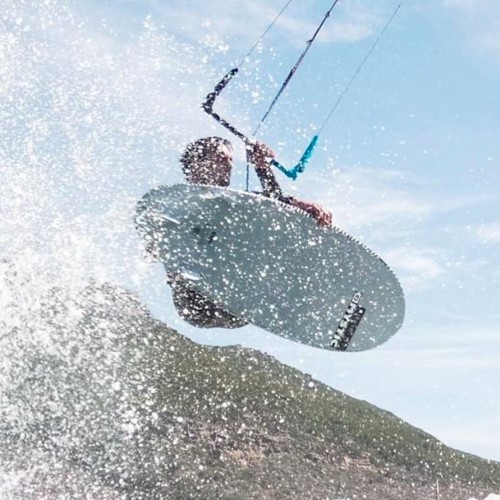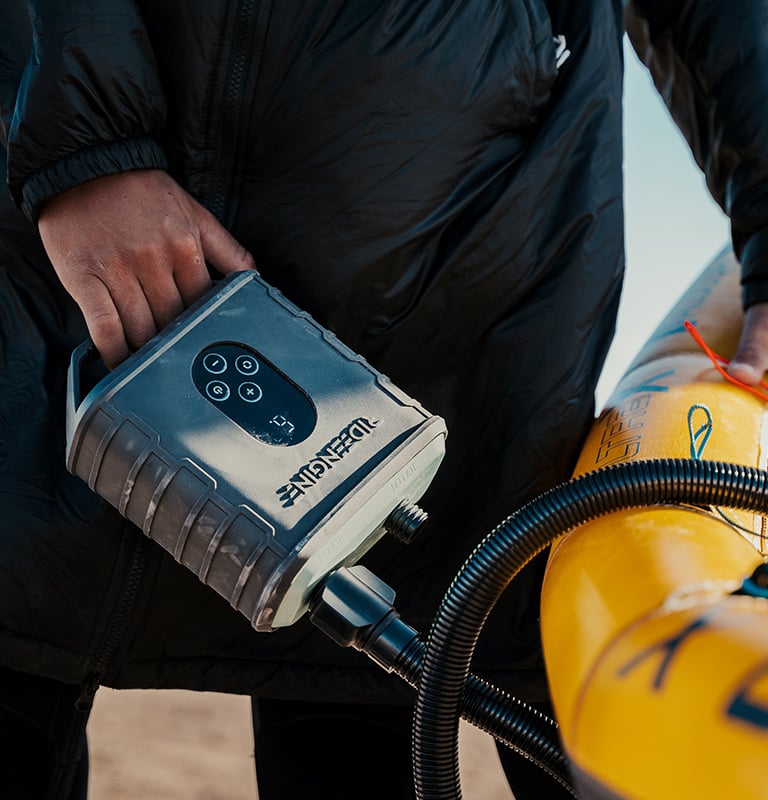
Airush Surf Series – Behind The Design
Sun 28th Jul, 2019 @ 3:00 am
Airush Kiteboarding caught up with the Surf Series board designer Clinton Filen, to get the scoop on the key changes for the new Surf Series…
Firstly, looking at the overall directional board range, quite visibly, there are fewer constructions, and you have discontinued the Converse. What was the idea behind these changes?
We set ourselves an objective to reduce the number of constructions we offer, to enable our network to carry a larger selection of shapes instead of needing to carry a large variety of both shapes and constructions.
To achieve this, we decided to move away from our single skin Custom Epoxy construction completely. Ultimately, a sandwiched structure will offer a greater strength-to-weight ratio, and over the last few years. We’ve continued to optimise the flex to a point where higher strength can be achieved while maintaining the ideal flex and response.
The discontinuation of the Converse was a tough decision. However, the changes in the Comp meant that there was quite a big overlap between the two models, as the Comp covers a much larger range of conditions. Feedback from our riders helped reinforce this decision, as their preference when testing steered towards the Comp.
What were the changes in the Comp, and the benefits of these changes?
We increased the tail rocker; this helps the overall turning abilities, specifically off the top.
Reduced rail thickness; this allows the rail to sit deeper in the water when turning, making the board more suitable for high-speed bottom turns.
Reduced overall thickness; this keeps the rider closer to the water and increases the boards’ ability to handle speed.
Introduced new sizes, the 6´0 is now discontinued, and a new 5´6” introduced to the range. This carries over to the Diamond, where the Diamond is now a 5´4” and steps down in width by ¼” to 17.5”, with corresponding reductions in width.
There is no “Tomo” inspired square nose shape in the Airush range, and the AMP is said to be the board aimed at this space. What is the thinking behind this?
The benefits of a square, a parallel outline is for stability at speed (We have done this in the past with the Cypher model). Adding a big square tail to the mix will give you early planing. However, I believe you sacrifice carving ability (big top and bottom turns) with this shape, and I prefer to use a flatter rocker for speed and keep the manoeuvrability with the curved outline. This is also illustrated through the feedback in pure surfboards, where the square nose trend has dissipated.
Currently, we do not make a pure flat-water surfboard, as our feedback is that most customers, and our test riders, want to keep an element of wave riding in the board, even when doing strapless freestyle.
The AMP has a flat rocker with a fair amount of curve in the nose and tail, giving it a classic “Summer Board” performance feel, for speed in small waves, while still being able to throw tighter turns. The Mini Monster essentially has the same nose as the AMP, but with a wider tail and more parallel rails giving it better upwind and light air performance.
How does this translate into fins, and why do you ship most boards without fins?
Starting at the Mini Monster, due to its “fish” shape, it’s best ridden with larger outside fins, as this helps to compensate for the very parallel rails, as well as assisting with the drive and manoeuvrability. Even though it is twin fin influenced, for kiteboarding, I would recommend a small trailing centre fin, as this helps to stabilise the board at the speeds found in kiting. I would recommend the AK Thrasher, but the Futures Machado, Rasta, and AMT 2+1 all look interesting.
For the AMP and the Comp, we designed these around the AK6 fin set, but if you have a preferred shortboard fin, this would be an excellent option to experiment with.
The reason we ship boards without fins is that, in our experience, many intermediate to advanced customers have an idea of what fins they like already. We don’t want to add to the price of an expensive product with fins that customers may not want.
None of the Airush boards have foot strap inserts, what is the thinking behind this?
If you are riding without footstraps, the insert plugs create significant weak points in the deck. This requires heavy reinforcement, and combined with the weight of the plug, had us looking towards different solutions for strapped riders.
This inspired collaboration with AK a few years ago, to develop a Glue-On Insert Pad. This allows you to place your straps in the indicated positions, and the stainless inserts are better for long term longevity.
Read more about the AK Durable Supply Co. traction here.
Is this why Airush boards are sold without traction?
Partially, but we also found a huge amount of varying feedback on preferred traction. Some riders enjoy very thick pads, others very thin, and then some want footstraps. By selling the boards naked, the rider can make their own decision on the details.
Any last words on the Surf Series program?
Hmmm, I think it’s essential that customers understand that we build the highest performing, and most durable boards we possibly can, with the best supplier we can find, and as sustainably as possible. This is a lot of criteria that ultimately have an impact on the price. More and more often, I meet people that believe in spending a bit more money and having a product that is not disposable, but well-engineered and carefully innovated, so that in 3-5 years it remains relevant and works for the rider.

Win a Ride Engine Air Box Electric Pump this issue in our FREE subscriber prize draw.
For more information on Airush products, please click here.

















